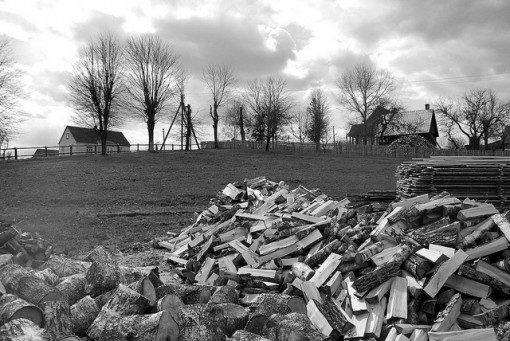- Customer Care +91 98140 33011
- info@treemitra.com

Deforestation
Deforestation i.e. cutting down of trees on a huge scale is considered to be one of the contributing factors to global climate change. According to Michael Daley, associate professor of environmental science at Lasell College in Newton, Massachusetts, the major problem of Deforestation is drastic climate changes. Gas molecules that absorb thermal infrared radiation are called greenhouse gases. If greenhouse gases are in large enough quantity, they can force climate change, according to Daley. While oxygen (O2) is the second most abundant gas in our atmosphere, it does not absorb thermal infrared radiation, as greenhouse gases do. Carbon dioxide (CO2) is the most prevalent greenhouse gas. In 2012, CO2 accounted for about 82 percent of all U.S. greenhouse gas, according to the Environmental Protection Agency (EPA). Trees can help, though. 300 billion tons of carbon, 40 times the annual greenhouse gas emissions from fossil fuels, is stored in trees, according to Greenpeace.
Deforestation can also be seen as the removal of forests leading to several imbalances ecologically and environmentally. It is an alarming situation as the continuous deforestation will lead to severe ecological problems for the generations to come thus affecting the quality of Life. It is predicted that we will lose all the rainforests of the world if the deforestation continues with the current space.

Causes of Deforestation
Agricultural Activities: As earlier mentioned in the overview, agricultural activities are one of the major factors affecting deforestation. Due to overgrowing demand for food products, a huge amount of tress is fell down to grow crops and for cattle grazing.
Logging: Industries like paper, match-sticks, furniture etc. require a substantial amount of wood as a raw material. Wood is used as fuel both directly and indirectly, therefore trees are chopped for supplies. Firewood and charcoal are examples of wood being used as fuel. Some of these industries thrive on the illegal wood cutting of trees
Urbanization: In order to gain access to these forests, the construction of roads are undertaken; and trees are chopped to create roads. Overpopulation too directly affects forest covers, as with the expansion of cities more land is needed to establish housing and settlements. Therefore forest land is reclaimed.
Desertification of land: Some of the other factors that lead to deforestation are also part natural and part anthropogenic like desertification of land. It occurs due to land abuse making it unfit for the growth of trees. Many petrochemicals release their waste into rivers which results in soil erosion, making it unfit to grow plants and trees.
Mining: Oil and coal mining requires a considerable amount of forest land. Apart from this, roads and highways have to be built to make way for trucks and other equipment. The waste that comes out from mining pollutes the environment and affects the nearby species.
Forest Fires: Another example would be forest blazes; hundreds of trees are lost each year due to forest fires in various portions of the world. This happens due to extreme warm summers and milder winters. Fires, whether caused by man or nature results in huge loss of forest-covered land.
Effects of Deforestation
Climate Imbalance: The major effect of deforestation can be seen on climatic conditions. The water vapor released by trees and the shade provided by trees gets compromised, leading to increased temperatures and decreased soil moisture. Nature is a home for various flora and fauna across the world, this haphazard clearance of forests have forced several of these animals to shift from their native environment. Due to this several species are finding it difficult to survive and are on the verge of being extinct.
Increase in Global Warming: The trees utilize the greenhouse gases, restoring the balance in the atmosphere. With constant deforestation the ratio of greenhouse gases in the atmosphere has increased, adding to our global warming woes.
Soil Erosion: The shade of trees retains the moisture content of the soil. With the clearance of trees, the soil is directly exposed to the sun, making it dry.
Floods: During monsoon, trees absorb and retain a large amount of water with the help of their roots. When trees are cut, the water is not retained leading to floods in some areas and droughts in others.
Wildlife Extinction: Forests are home to many species. With deforestation, they lose their habitat and forced to move to a new location. Some of them are even pushed to extinction. Our world has lost so many species of plants and animals in the last couple of decades.
Solutions to Deforestation
The best solution to deforestation is to curb the cutting of trees, by employing a series of rules and strict laws to govern it. Deforestation in the current scenario may have reduced however, it would be too early to assume. The money-churner that forest resources can be, is enough to feed the greedy nature of humans leading deforestation to continue.
Clear-cutting of forests must be banned. This will curb total depletion of the forest cover. It is a practical solution and is very feasible.
Land skinned of its tree cover for urban settlements should be urged to plant trees in the vicinity. Also, the cutting must be replaced by planting young trees to replace the older ones that were cut. Many trees are being planted under several initiatives every year, but the damage done is on the much higher level and hence more and more plantation drives are the need of the hour.

